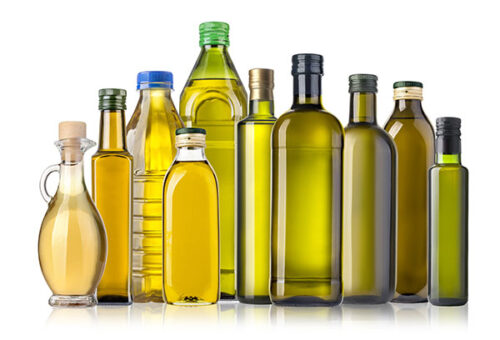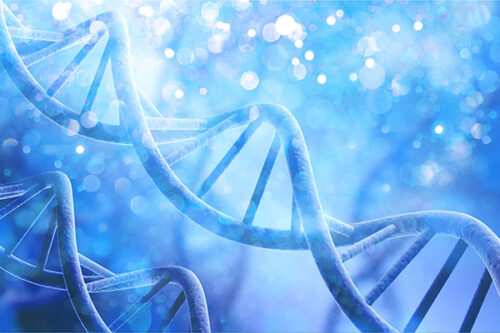Stumbling Blocks to Dietary Transition
By John McDougall
The McDougall Diet can be summed up in two short sentences:
- The McDougall Diet is based on starches (corn, potatoes, rice, etc.) with a few fruits and non-starchy vegetables (kale, broccoli, celery, etc.).
- The McDougall Diet contains no animal-derived foods nor any added vegetable oils.
Our first book (a ringed notebook) was called Making the Change. Mary and I knew, when we wrote it back in 1978, that “medical miracles” could be achieved by a major shift in our patients’ nutrition. We also understood the difficulty in transitioning away from the foods we had always loved to new foods and preparations.
Our efforts for the past 40 years have been to develop ways to facilitate this transition. This has led to 13 national best-selling books, 176 monthly Internet newsletters, hundreds of videos, worldwide lectures, 31 years of residential programs, more than 30 adventure vacations, over 100 weekly webinars, more than 3,000 recipes, the McDougall Cookbook App, and much more. Our two most recent efforts are the “Quick Start” videos and “Dr. McDougall’s Color Picture Book on Food Poisoning.” All of this educational material is free on my website (no gimmicks). Use the SEARCH feature on my site to find more specific answers I offer on various problems ranging from acne to hemorrhoids to vitamins.
The result of our efforts has been that millions of people have made the change and regained their lost health and appearance. (And most have accomplished this at little or no cost to themselves at all.) This transition can be easy, but questions do come up along the way. I would like to address some of the common stumbling blocks that people face.
Frequently Asked Questions
Q: “I don’t like any of the McDougall recommended foods. What do I eat?
A: Of course you do not like our meals; If you did, you likely would not be having trouble with your health and body weight. Fortunately, the human body is highly adaptable and the new foods take on a real appeal after about four days of strict eating. (During this time period—and for decades after for many of us—eating even a small bite of our old favorite foods will result in a serious setback.) Ease the burden of adapting by finding starches (corn, potatoes, rice, etc.) you already enjoy. What have been your family’s traditional foods? The ones you grew up on? Italian? then look to healthy pastas. Being from the Midwest, mashed potatoes were plentiful in the McDougall house growing up. My friends from Japan and China still eat large amounts of rice at each meal. So start with what you already like.
Add salt to the surface of the food (unless contraindicated). This is the flavor ingredient people most miss when switching to McDougall foods. At our clinic in Santa Rosa, California we have real saltshakers on the dining room tables. Use your favorite spices. There are many sauces, spices, and other condiments that are acceptable for the McDougall Diet. Look over the “Canned & Packaged” section of my website for convenient items that may help you.
Appetite satisfaction is necessary for success. Eat more food. Starch is crucial! Non-starchy vegetables (kale, broccoli, etc.), while very good for you, leave you feeling unsatisfied. Simplicity is helpful: think of meals as: rice, beans, and kale; sweet potatoes and broccoli; potatoes and cabbage; corn and squashes; etc. When you “eyeball” your plate you should see about 90% of the food as being starch(es).
Q: I ate strictly McDougall foods this past week and have gained 10 pounds (4-5 Kg). What’s wrong?
A: This can happen in the beginning for several reasons. People can gain weight if they have been “dieting” (serious food restriction) and now are allowed to eat as much as they want. This overeating corrects itself after the initial gain. As your appetite is satisfied (by starch) you will spontaneously consume the right number of calories. Your body instinctively strives to survive, and that means when unburdened by all the wrong foods (olive oil, pork chops, cheesecake, etc.) the excess body fat naturally is burned away.
People who have been “starving” or have been following low-carb (Keto type) diets may also regain 10 pounds of “sugar stores” (called glycogen) deposited in the liver and muscles for quick energy. This is normal and has no negative effect on your ultimate goal of permanent loss of excess body fat.
Eating out is the biggest setback for people. Restaurant employees do not understand “No Oil.”
Q: I am afraid to stop my medication. What is the alternative?
A: Your goal is to become and remain healthy; sick people take medications. My observation has been that most of the medications that people are prescribed do more harm than good and should never have been recommended in the first place, regardless of their current diet and lifestyle. With better eating and the health that follows, the indications for most other medication (blood pressure, blood sugar, indigestion, constipation, etc.) disappear and then the medications are no longer needed.
Medications will need to be reduced or stopped under a competent physician’s supervision. In most cases, I find it is better to error on the side of taking less rather than more when judging the immediate and long-term effects on blood pressure and blood sugars. When making changes I have my patients (in general and when appropriate) monitor their blood pressure about twice a week and blood sugars no more than once daily (fasting).
It takes time to regain confidence in your health. Years of being diagnosed as an “ill person” and the tests and treatments that accompany your conditions make people emotional “cripples.” Even after the numbers become normal (body weight, pressures, sugars, etc.) and people feel great. More time may still be required to regain confidence in your health. Look forward to the day when you wake up and think, “I am not dying of heart disease.” Or “It has been more than a week since the words ‘breast cancer’ entered my mind.”
Q: My blood sugar is scary high. What can I do?
A: You should be under professional medical care; see your physician. Type-2 diabetes is 100% curable with weight loss. Type-1.5 diabetes (partial pancreatic insufficiency) may require some insulin replacement, especially if you lose too much weight, develop symptoms (like excess urination), or you worry about the blood sugar numbers. Type-1 diabetes always requires an outside source of the missing hormone insulin (injections). Read carefully the articles on “The Simple Care of Diabetes” and “The Latest Scams from the Diabetes Industry.”
From these articles you will learn that aggressive treatment of diabetes with medications kills, and that your main focus of attention needs to be on the food. Share these articles with your healthcare providers.
Q: I stopped my blood pressure medication and my blood pressure is so high I am getting headaches. Am I in danger?
A: You should adjust your medications under professional medical care; see your physician. Unfortunately, few physicians have experience with reducing or stopping medications. Most of them only know how to direct you to the newest, most profitable, brand-name product that their physically attractive drug rep just told them about.
High blood pressure is a “silent disease” and rarely causes symptoms, like headaches. This diagnosis depends on readings taken by a simple machine (a sphygmomanometer).
In general, I start my patients with readings of 160/100 mmHg or higher (sustained for weeks or months) on medication(s). Readings taken during a doctor’s office visit don’t count because they often reflect anxiety: “White Coat Syndrome.” Buy a simple BP machine at your local store and take readings at home, record the results, and discuss these numbers with your physician at your next visit. When treatment is necessary I use a simple diuretic called “chlorthalidone” for my patients. Read carefully my article “How I Treat Patients with Elevated Blood Pressure.” Note also: Overtreatment of blood pressure with medication increases your risk of dying of a stroke or heart attack.
Our results, published on 1,615 people, show an overall reduction of high blood pressure (starting at 160/90 mmHg or greater) by 18/11 mmHg in seven days and nearly 90% of the patients reduced or stopped their blood pressure lowering medications along with this improvement in numbers.
Q: My triglycerides went up even though I am getting other great results from the McDougall Diet. What am I doing wrong?
A: Triglycerides are fats in the blood, and these numbers can vary by 100 points in an hour (such as after eating). (To mentally picture triglycerides, think of the layer of fat (triglycerides) that collects at the top of refrigerated chicken soup. The same top layer formation occurs inside a glass tube of your blood). This biomarker is of low predictive value for poor health outcomes, and when treated with medications, the harms (more death and disease) far outweigh the benefits (lower numbers). For my patients, I stop medications (fibrates) that are commonly prescribed and specifically intended to lower triglycerides because they have serious side effects and have no benefit in reducing the risk of cardiovascular disease.
Our results published on 1,615 people show an overall average rise of 2 mg/dL of blood triglycerides in seven days of unrestricted eating of McDougall foods. Those with low triglycerides (<150 mg/dL) in the beginning show an 8 mg/dL rise. However, people starting with high normal triglycerides (150 to 199 mg/dL) show an 11.5 mg/dL reduction. With high triglycerides at the beginning (200 to 499 mg/dL) the reduction is on average 46 mg/dL, and with very high triglycerides (>500 mg/dL) the reduction is 294 mg/dL in seven days.
Because the McDougall Diet allows an unrestricted amount of the right foods (no portion control), participants eat a lot, sometimes much more than ever before. Eating more calories, especially those from carbohydrates, causes a temporary rise in triglycerides in some people with normal values at the beginning; that is expected and of no negative health consequence. As the appetite becomes satisfied, people naturally eat less volume and the triglycerides naturally normalize. In time, along with the associated weight loss, those who are adherent to the Program will see their triglycerides at normal (<200 mg/dL) values (fasting).
Reduction of diabetic medications can result in a temporary rise in triglycerides. With time this also corrects.
Q: My “good” HDL cholesterol went down. This can’t be good?
A: High Density Lipoprotein (HDL = “good cholesterol”) is just one measured fraction of total cholesterol. When the total goes down all fractions (like HDL) also are reduced. Worrying about these fractions can cause harm since one solution to raise HDL is to eat more cholesterol (meat, eggs, etc.). Worldwide, the populations of people with the lowest HDL cholesterol levels have the lowest rates of heart disease because they also eat a better diet (causing also a lower total cholesterol).
The misinterpretation of the importance of raising “good” HDL cholesterol is emphasized by the observation that drugs used for this purpose have caused an increase in death and thus have been banned from sale.
Q: I am losing too much weight. What can I do?
A: I use a weight chart that many people consider too low; however, these values are not necessarily goals. Steps to add more bodyweight begin with adding breads and other refined grain products and concentrated sugars, like dried fruits. The last step is to add high-fat plant foods like nuts, seeds, and avocados. With these high-fat foods (consisting of as many as 90% fat calories), I can create a meal plan higher in fattening calories than most people already eat.
Q: I have anemia (low red blood cell counts) since I started the diet. Where do I get my iron?
A: This myth of the need for animal muscle for nutrients such as iron is simply one of the sales pitches from the livestock industry. Plant foods are loaded with minerals, including iron. Dairy foods are actually a leading cause of iron deficiency anemia, because they contain virtually no iron and the calcium and phosphorus in the milk prevent iron’s absorption. If you have anemia, insist that a source be found and your nutrition advisor does not overlook important causes of anemia, such as bleeding from the GI tract—because he/she doctor has already concluded your problem is from your vegan diet.
You will also have to overcome the problems of ignorance from your friends, family, and physicians regarding protein and calcium needs if you are vegan or even lacto-ovo vegetarian (with dairy and eggs).
Q: My doctor says I should eat Paleo (high-fat low-carb). Why should I listen to you McDougall?
A: I, John McDougall, have earned the right to share my educated opinion with all of you and to have the privilege of caring for a few of you as patients. I am a real medical doctor who has cared for more than 10,000 patients over the past 40 years. Results of about 2,500 of my patients have been published in scientific, peer-reviewed medical journals. You will find a more detailed explanation by reading my July 2017 newsletter.
Finally, you did not become ill and overweight overnight. Be patient with your learning curve and your body’s unrelenting efforts to heal and stay healthy.
Recommended Articles

When Friends Ask: Why Do You Avoid Adding Vegetable Oils?

Making the Change to a Healthy Lifestyle Work, Part 1 - Why Change?







